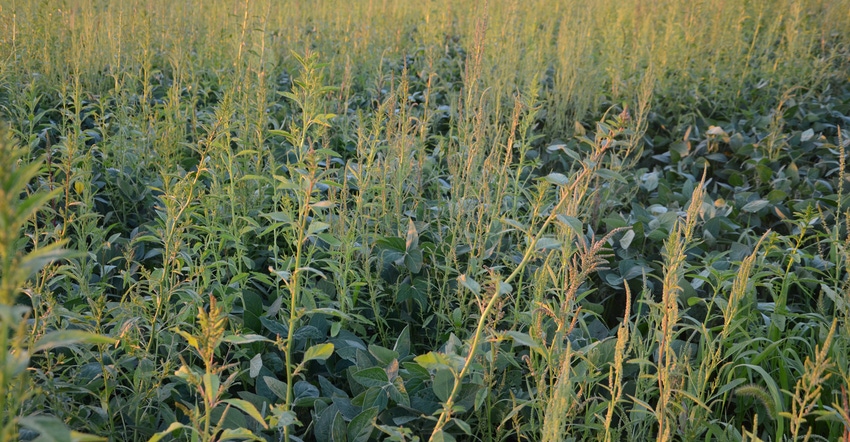
If you’re raising crops in Indiana, assume that waterhemp is in your fields. Bill Johnson says that’s the best strategy if you want to avoid a disaster.
“We’ve been watching it over the past two to three years, and it’s showing up in more fields around the state,” says Johnson, a Purdue University weed control specialist. “The problem is that there may only be a few weeds here and there in a field for a year or two. If the grower sees them, he doesn’t think it’s going to be a big problem.”
Johnson’s message is simple. If you see waterhemp and don’t do anything, it’s going to become a big problem. And even if you don’t remember seeing waterhemp plants, assume they’re in your area and could be in your fields as soon as this year. And they may not just show up — they could explode in a big way, he says. By the time you realize you have a problem, the weeds are large enough that they’re tough to control. The goal is to prevent that scenario from happening in the first place.
“When I came to Indiana 16 years ago, there were about four pockets in the state which had some waterhemp issues,” Johnson recalls. “Since then, the population has exploded, and it’s best to assume they’re everywhere.”
Waterhemp is a pigweed species, related to Palmer amaranth and redroot pigweed. It’s been a thorn in farmers’ sides in western states for a long time, and has moved east, now extending all the way across Indiana. “One waterhemp plant can produce 200,000 seeds if you let it grow,” Johnson says. “That’s why it can explode so quickly. Combines do a good job of spreading seeds from a few plants around until there are seeds everywhere.”
Control methods
The secret to getting ahead of waterhemp is to include residual herbicides in your weed control program, Johnson says. That means including residual herbicides in the burndown application and the postemergence spray trip.
“Pigweeds have the ability to continue germinating into midsummer,” he says. “If you rely on postemergence herbicides, it’s likely waterhemp seeds will germinate after you make the application. Contact sprays don’t affect what germinates after application. You need a residual with soil activity to prevent germination in the first place.”
If you just rely on residual herbicides before planting, odds are they will run out of steam and active ingredients will be gone before the last flush of waterhemp germinates in midsummer, Johnson says. “It adds expense to put residual herbicides in the mix, but the alternative could be fields where weeds get out of control,” he adds.
Several broad-spectrum residual herbicides have activity against waterhemp, Johnson says. Herbicides are divided into groups based on their site of action. Each group has a number. Several broad-spectrum herbicides that can be used premergence or preplant will include a Group 14 herbicide like Valor or Authority.
When you’re spraying postemergence, you want to include a Group 15 residual product in the mix, Johnson says. Dual, Warrant, Outlook or Zidua are possibilities.
About the Author(s)
You May Also Like




